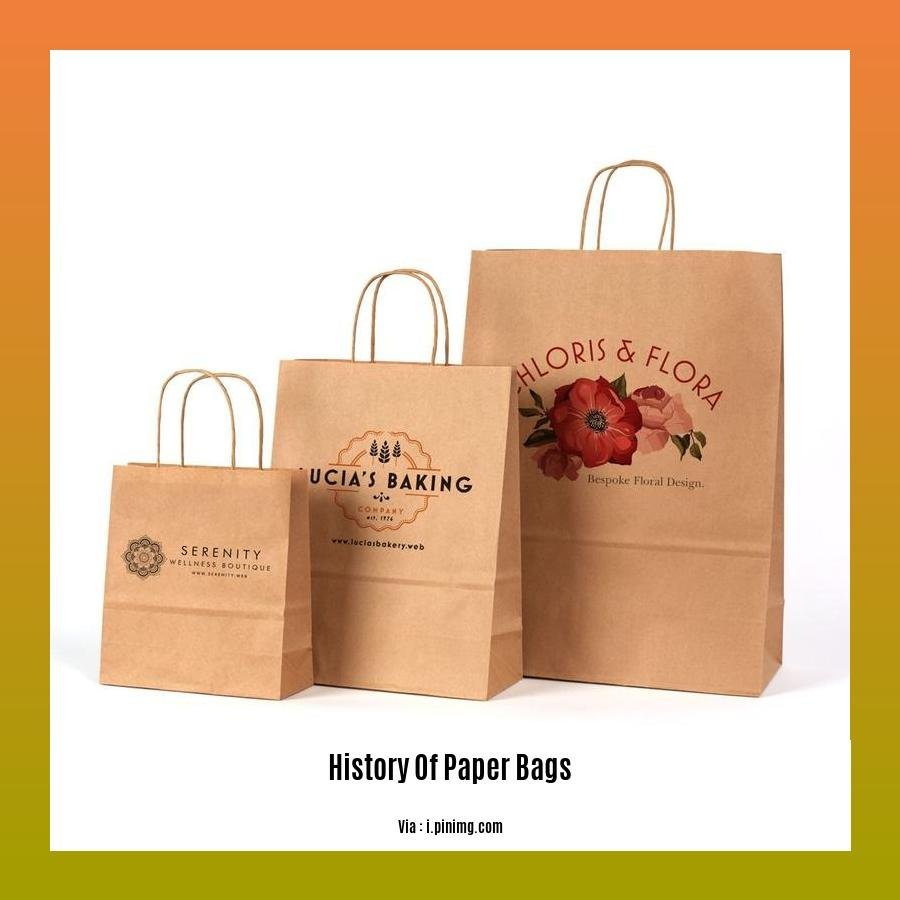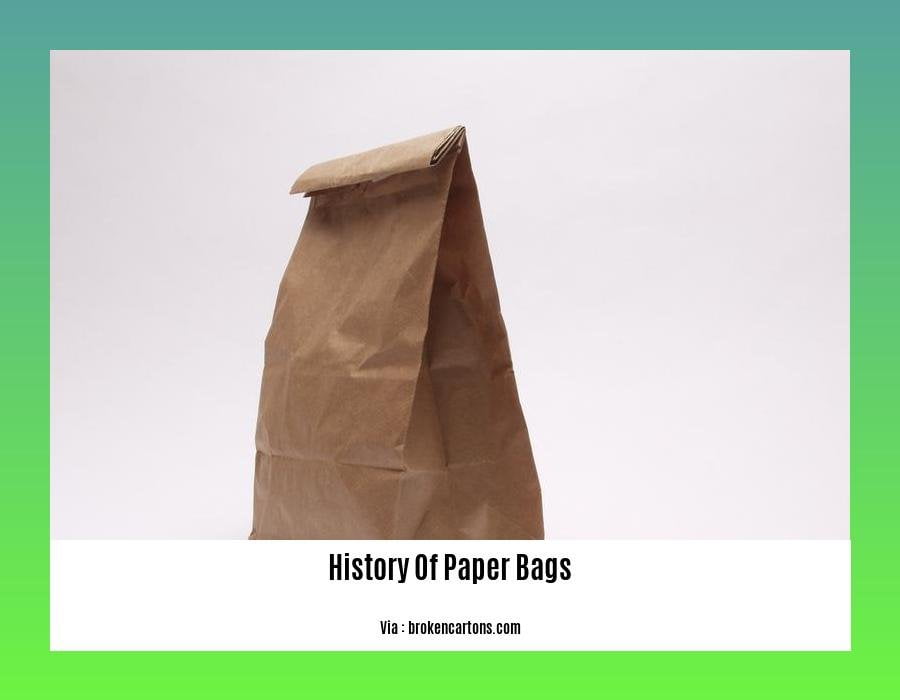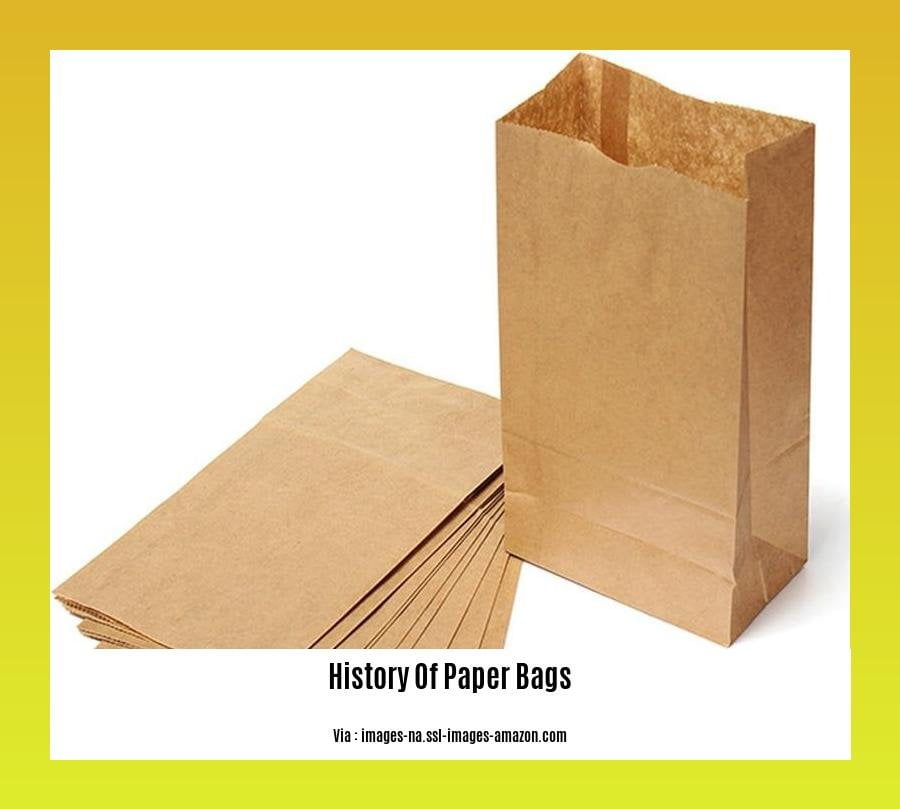From humble origins as simple carriers to their current status as sustainable packaging solutions, paper bags have come a long way. Join us as we embark on a journey through the history of paper bags, exploring their evolution from the innovation of the 19th century to the eco-friendly alternatives of today. Along the way, we’ll uncover the stories behind these ubiquitous items and their remarkable impact on consumer culture and environmental consciousness. [The History of Paper Bags: From Humble Beginnings to Sustainable Packaging]
Key Takeaways:
The invention of the first machine to mass-produce flat, envelope-style paper bags in 1852 by Francis Wolle and his brother marked the beginning of the paper bag’s history.
James Baldwin patented a machine for making square-bottomed paper bags in 1853, further advancing the design.
Walter Deubener revolutionized paper bag design in 1912 by adding handles, enhancing their functionality for grocery shopping.
The convenience and durability of paper bags led to their widespread use for packaging groceries, school lunches, and various other items.
By the 1950s, retailers recognized the potential of paper bags as promotional tools, printing their logos and branding on them.
History of Paper Bags

In the tapestry of everyday objects, the humble paper bag holds a unique place, bearing silent witness to the ebb and flow of human history. Its journey began in 1852, when Francis Wolle and his brother conjured the first machine capable of mass-producing flat, envelope-style paper bags. This innovation set the stage for a revolution in packaging, ushering in an era of convenience and portability that forever changed the way we shop, store, and transport our belongings.
A year later, James Baldwin, a papermaker from England, etched his name in the annals of paper bag history when he patented a machine that crafted square-bottomed paper bags. This breakthrough design enhanced the functionality of paper bags, making them more suitable for a wider range of applications.
The year 1912 witnessed another leap forward in paper bag technology when Walter Deubener, a grocer from Minnesota, conceived paper bags with handles. This seemingly simple addition transformed the paper bag from a mere container into a versatile carrier, making it an indispensable tool for shoppers navigating the aisles of grocery stores.
As the 20th century unfolded, paper bags steadily gained popularity, becoming ubiquitous in retail stores, markets, and households alike. Their convenience, durability, and versatility made them the preferred choice for packaging groceries, transporting children’s school lunches, and countless other purposes.
In the 1950s, retailers astutely recognized the potential of paper bags as free promotional tools, adorning them with their logos and branding. This strategic move not only bolstered brand recognition but also inadvertently elevated the paper bag to a symbol of consumer culture.
Today, the history of paper bags is inextricably intertwined with the evolution of packaging and sustainability. As environmental consciousness takes center stage, paper bags are increasingly favored over their plastic counterparts due to their biodegradability and recyclability.
From their humble beginnings as simple carriers to their current status as sustainable packaging solutions, paper bags have come a long way. Their journey mirrors the ever-evolving needs of society, showcasing how innovation and environmental awareness shape the objects we use in our everyday lives.
To learn about the fascinating journey of how parchment paper came to be, delve into our comprehensive article on the history of parchment paper here.
In our exploration of the world’s beauty treatments, discover the captivating history of pedicures and how they’ve evolved into the pampering rituals we know today.
From the tribal rhythms of ancient times to the modern-day drum solos that electrify, embark on a journey through the history of percussion instruments to uncover their captivating evolution.
History of Brown Paper Bags:

The unassuming brown paper bag, a ubiquitous presence in our daily lives, holds a rich and multifaceted history. It has evolved from a humble packaging solution to a symbol of discrimination, a feminist icon, and a sustainable alternative to plastic. Join us as we delve into the fascinating journey of the brown paper bag:
Key Takeaways:
Invention and Innovation: Francis Wolle, a Pennsylvanian inventor, is credited with creating the first flat, envelope-style paper bag in 1852. Margaret E. Knight, an American inventor, revolutionized the industry in 1870 with her patented machine for producing flat-bottomed paper bags.
The Jim Crow Era: The “brown paper bag test” emerged as a discriminatory practice during the Jim Crow era. Individuals with skin darker than a brown paper bag were classified as black, perpetuating colorism and white supremacy in the United States.
Feminist Symbol: In the early 20th century, brown paper bags became a symbol of women’s empowerment. Working women used them to discreetly carry their lunches, challenging societal norms and asserting their independence.
Environmental Consciousness: In recent years, the brown paper bag has re-emerged as an eco-friendly alternative to plastic bags. Its biodegradability and reusability align with growing concerns about plastic pollution and environmental sustainability.
The Brown Paper Bag’s Impact:
The brown paper bag has left an indelible mark on society, influencing culture, commerce, and environmental consciousness:
Packaging Pioneer: The brown paper bag revolutionized the packaging industry, providing a convenient and affordable solution for transporting and storing goods.
Symbol of Social Injustice: The “brown paper bag test” stands as a stark reminder of the pervasive discrimination faced by African Americans during the Jim Crow era, highlighting the enduring legacy of racial prejudice.
Feminist Icon: As working women sought to balance domestic responsibilities with professional aspirations, the brown paper bag became a symbol of their resilience and determination, challenging societal expectations.
Sustainable Solution: In the face of growing environmental concerns, the brown paper bag has emerged as a sustainable alternative to plastic bags, promoting waste reduction and eco-consciousness.
Conclusion:
From its humble origins as a packaging innovation to its role in social movements and environmental sustainability, the brown paper bag has played a multifaceted role in shaping our world. As we move towards a more conscious and sustainable future, the brown paper bag stands as a testament to the power of innovation and its ability to drive positive change.
Sources:
The Secret Feminist History of Brown Paper Bags
FAQ
Q1: Who invented the paper bag?
A1: Francis Wolle invented the first machine to mass-produce flat, envelope-style paper bags in 1852, while James Baldwin patented a machine for making square-bottomed paper bags in 1853.
Q2: What was the significance of Walter Deubener’s invention?
A2: Walter Deubener invented paper bags with handles in 1912, making them easier for shoppers to carry their groceries, which greatly increased the convenience of paper bags.
Q3: How did paper bags become popular for various purposes?
A3: Paper bags gained popularity for packaging groceries, transporting children’s school lunches, and other uses due to their convenience, durability, and affordability.
Q4: When did retailers start using paper bags as promotional tools?
A4: In the 1950s, retailers began using paper bags as free promotional tools, printing their logos and branding on them, which helped to increase brand recognition and customer loyalty.
Q5: What was the “brown paper bag test,” and how was it used?
A5: The “brown paper bag test” was used during the Jim Crow era to determine if someone was of African descent. If a person’s skin was darker than a brown paper bag, they were considered black. This discriminatory practice reinforced colorism and was a legacy of white supremacy and slavery in the United States.
- Unlocking Francis Alexander Shields’ Finance Empire: A Comprehensive Biography - July 12, 2025
- Unveiling Francis Alexander Shields: A Business Legacy - July 12, 2025
- Francis Alexander Shields’ Business Career: A Comprehensive Overview - July 12, 2025















